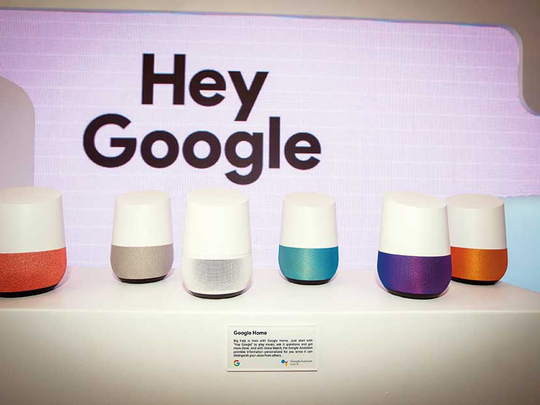
Dubai
CES is over. The sun has set yet again on the world’s largest electronics show, disappearing behind the mountains surrounding Las Vegas and bringing to life a city that truly never sleeps.
This time around, the show featured close to 3,900 exhibitors across 2.75 million square feet of floor space, making it the largest in the show’s history, according to its organisers.
While the event is sometimes criticised for only offering iterative changes or improvements to existing products, keeping shoppers locked in to a yearly upgrade cycle, each edition showcases a handful of truly standout devices that go on to define people’s electronic lives in the future.
This year’s show was no different: Aside from the leaking roof, the occasional blackout, and the unexpected protest from Huawei chief executive Richard Yu providing the drama, CES 2018 saw the emergence of two-in-one laptops, the resurgence of wearables, and some truly intelligent home appliances. Oh, and a self-driving Domino’s pizza delivery car.
As the hordes of attendees boarded their respective flights to travel thousands of miles home, some will have undoubtedly pondered the following question: What was the single most memorable component of the week just gone?
And for many, the answer would have been simple: Not the self-driving cars that are still some decades away, or the excessively large and expensive TVs that get bigger and more costly each year, or the clunky, useless robots that can sing you happy birthday and little else.
No. Instead, the dominant story of the week was the arrival of voice-activated personal assistants, like Amazon’s Alexa, and Google’s imaginatively named Google Assistant.
According to a recent survey, the adoption of voice-activated speakers, which come equipped with a virtual assistant, is now outpacing that of smartphones in the US.
Over one in ten American adults now own a smart speaker, according to the Smart Audio Report, indicating that the trend of people bringing at least one intelligent device in to their home is growing rapidly.
At the forefront of this wave are Amazon and Google, who initiated at CES what was an aggressive campaign to promote their respective virtual assistants, and unveil as many third party devices equipped with voice-activated smart services as possible.
This is especially true for Google, who have opted to push their intelligent assistant technology in to as many devices as possible. While Amazon is attempting to do the same, the Seattle-based company have also released a number of their own devices equipped with Alexa, including the Echo, a smart speaker.
Between the two, customers can now have conversations with things like mirrors, washing machines, phones and speakers. If you add Samsung in to the mix, who at CES announced that they would be adding their own assistant, Bixby, in to their vast array of home appliances including fridges, air conditioning units, and ovens, then the number of devices that can tell you the temperature grows significantly.
And that is essentially what people are using these smart devices for: US-based management consultancy firm Activate found that the majority of heavy users of virtual assistants, defined as people who use one more than three times a day, typically asked them to either play music, get the weather, set a timer or ask questions.
What they are not using their assistants for, however, is to execute more complex tasks, like dimming the lights, turning up the thermostat, locking the front door, or feeding the dog.
That is because most houses and apartments are largely analogue, the supposedly intelligent assistants are still easily tripped up by context-dependant questions, or awkwardly phrased sentences, and people are perhaps not yet ready to let Google in to their homes.
But increasing people’s reliance on these systems is crucial for the tech giants: Success is a zero-sum game in the world of clever, talking home appliances.
The stakes are high. These companies want to ultimately control an indispensable platform — an essential piece of technology other devices or services must rely upon.
Companies like Google and Amazon are betting on the smart speaker, equipped with their own virtual assistant, acting as this gateway drug.
Some believe virtual assistant technology can be that sort of entry point in to people’s homes, and the company with the most helpful assistant will gain an advantage for their other, more profitable services — like internet search or online shopping. Lose that competition, however, and a company could be at the mercy of its rivals.
This imperative was clearly on display at CES last week: Google made an uncharacteristic splash, covering half of Las Vegas in promotional materials. It even gave the monorail a new lick of paint, featuring its “Hey Google” slogan, the command used to wake up their smart assistant.
Not to be outdone, both Google and Amazon also announced at the show that for their next trick, they intended to take their virtual assistants out of the home, and in to the car.
This will inevitably bring a heightened sense of reliance and acquaintance to their products, and deepen our sense of comfort with these robotic helpers, but ultimately, the question of whether these assistants will go on to become the cornerstones of our home, or fade away in to obscurity like so many other CES fads, remains to be answered.












